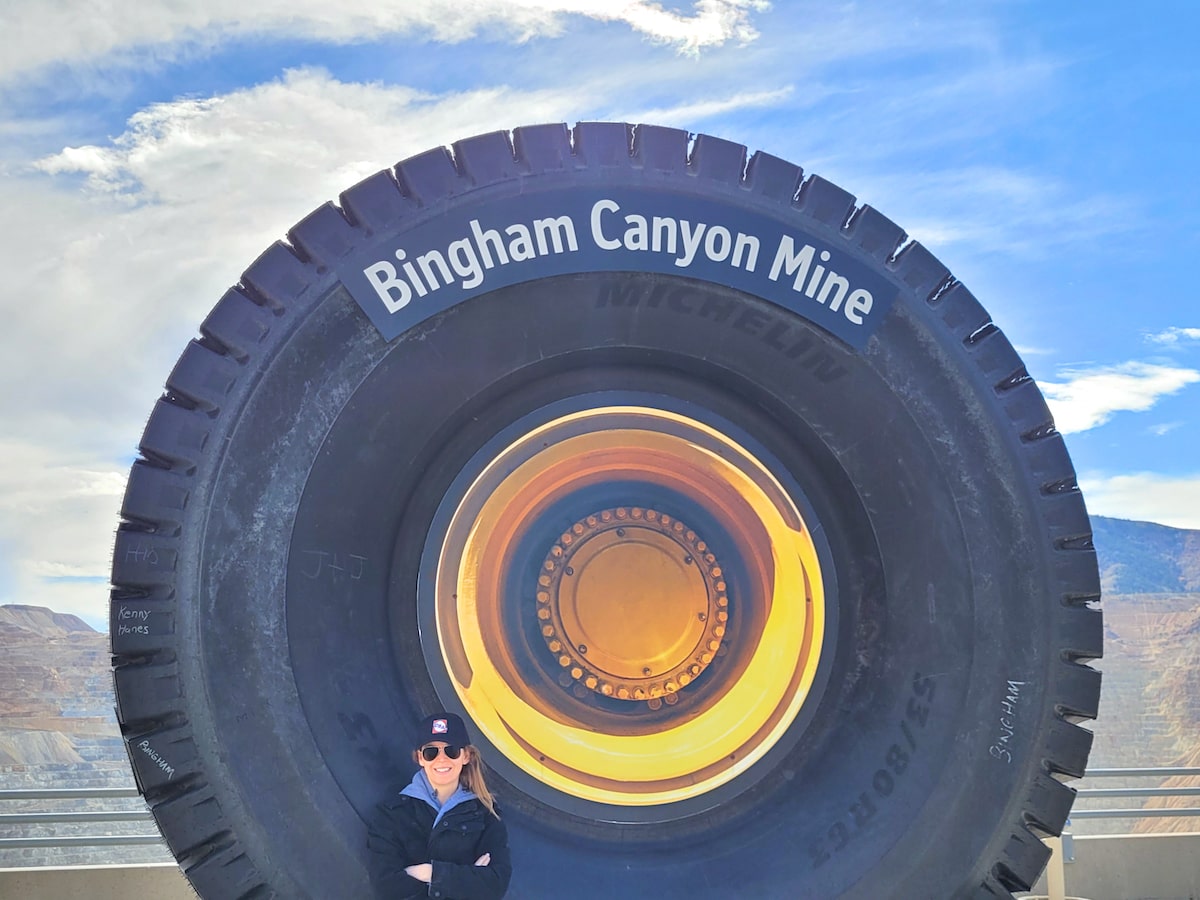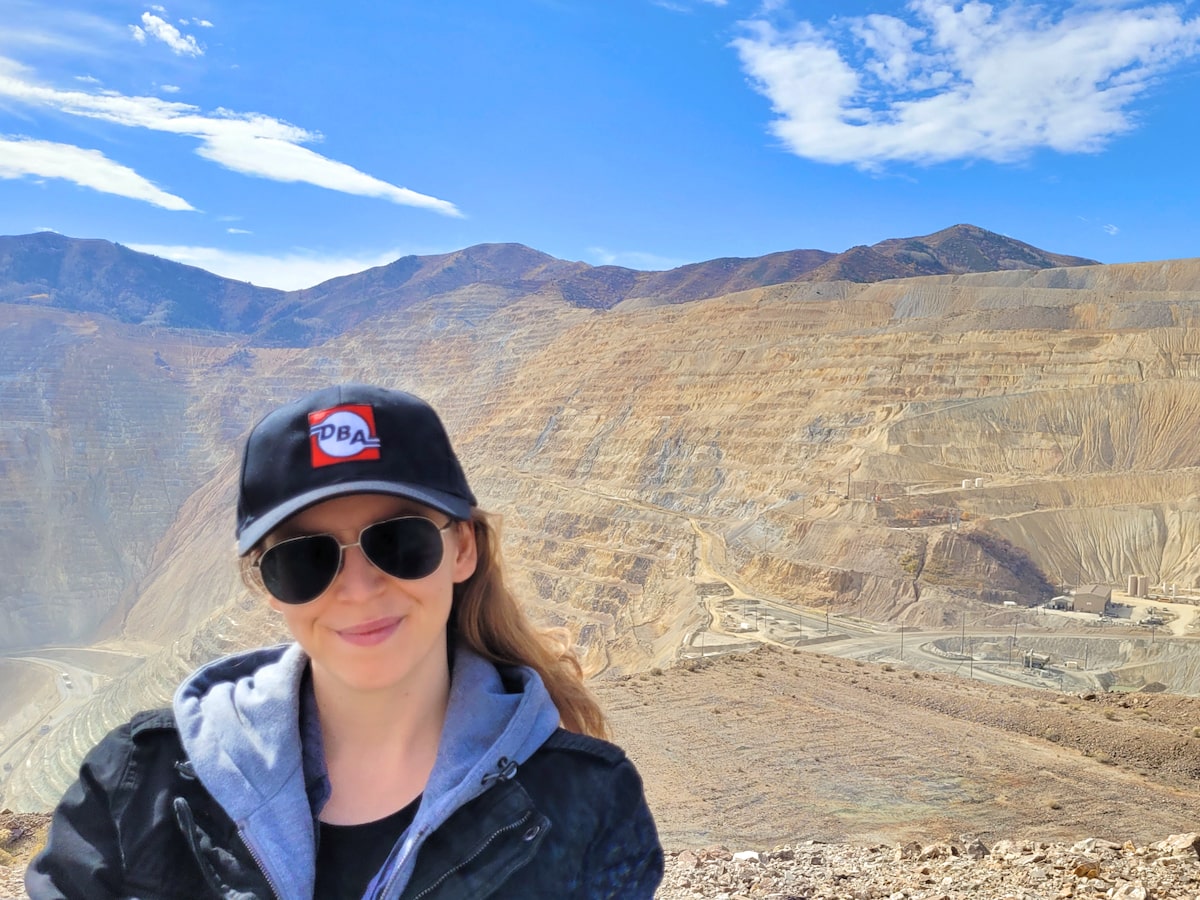Back To Bingham Canyon
Kaizen is a business philosophy that encourages small positive changes on a regular basis. This focus on continuous improvement characterizes the efforts of many modern mining companies. Mine site operators are, for instance, interested in improving performance with mining air intakes. They might do this by upgrading mining truck air intake filters. Mine site operators are also keen on reducing emissions from mining equipment, not only to comply with mining truck emission regulations but also for the good of the planet. Today’s post will centre on mine site initiatives related to noise control in mining operations.
As with our last article, we’ll connect this topic to the Bingham Canyon Mine in Salt Lake City, Utah. Earlier this month, DBA Silencing’s two General Managers – Darien Edgeler and Cydney Pedersen – made a second visit to this site to learn more about the operation.

During a tour of this copper mine, a member of the Bingham Canyon team mentioned to Darien and Cydney that they were taking various steps to encourage foliage growth on the rocky slopes in the zones surrounding the primary pit. The thinking is that grass and other greenery will reduce erosion, as well as improve the aesthetics of the area. An added bonus of this vegetation should be a reduction in noise pollution. Natural structures such as leaves absorb and deflect sound energy, thus decreasing its intensity.
Noise Control In Mining Operations
Mine sites can be extremely loud places, and this can pose a health risk to workers, as well as negatively impacting the surrounding environment and communities. Striking a balance between productivity and worker well-being is critical when it comes to noise control in mining operations.
And where does that high-volume racket originate? Well, there are a variety of sources. They include heavy machinery, drilling, blasting, and transportation vehicles. Prolonged exposure to elevated noise levels can result in various health issues for miners, such as hearing loss, increased stress levels, communication difficulties, and even long-term cognitive impairments. Additionally, noise pollution from mining can disrupt local ecosystems and disturb nearby communities, causing social and environmental concerns.

Combatting The Cacophony
To mitigate these issues, companies often utilize a combination of the following measures related to noise control in mining operations.
1. Proper Planning & Scheduling
Effective planning and scheduling of mining activities can help minimize noise during sensitive hours or in residential areas. This might mean conducting blasting operations during the day and using quieter equipment during nighttime hours.
2. Employee Training & Education
Miners should receive training on the appropriate use of personal protective equipment, such as noise-cancelling headphones and earplugs, to protect their hearing. Education about the dangers of excessive noise exposure is also crucial.
3. Noise Barriers & Enclosures
Constructing acoustic barriers and enclosures around rumbling and roaring machinery can help contain and reduce noise levels within a mine site. These structures need to be designed, of course, in such a way that they can withstand the harsh conditions associated with many mining operations.
4. Blasting Techniques
Innovations in blasting techniques, such as using less explosive material or employing advanced blast design methods, can reduce the noise generated during blasting operations.
5. Remote Monitoring
Implementing remote monitoring systems that allow operators to control and adjust equipment from a distance can help reduce the need for on-site personnel in noisy areas.
6. Community Engagement
Mining companies often engage with local communities to address their concerns about noise pollution. This can lead to commotion alleviation strategies satisfactory to all involved.

Maintenance & Modification
In the last section, we outlined a variety of steps that firms typically take when tackling noise control in mining operations. We didn’t, however, talk about equipment maintenance and modification.
If we had a list of mining truck exhaust system maintenance tips, fixing loose mining truck exhaust pipes would certainly be near the top. DBA’s aftermarket exhaust systems do typically have more give in them than their rigid OEM equivalents. We find this puts less strain on connections. Even so, we do like components to be cinched up snugly, so as to prevent trucks rattling through their routes; house-sized mining trucks generate more than enough vibration as it is!
Moving on from mining truck exhaust pipe repair to mining truck exhaust system modification, we’d like to take this opportunity to note that DBA does more than simply manufacture long-lasting mufflers for mining trucks. We also offer custom exhaust solutions for mining vehicles. {You can find more details on this in our article “Custom Truck Parts & Other Tailor-Made Solutions“.}
But even our standard DBA mufflers will significantly dampen the din on a mine site. Our units are effective noise cancellers because they introduce a pressure wave featuring the opposite wavelength to the original sound wave. If you’re interested in learning more about this sound nullification process, you may wish to check out our blog post entitled “Let’s Hear It For DBA Mining Truck Mufflers“.
DBA mufflers are also uniquely beneficial when it comes to noise control in mining operations. Our proprietary composite shells encase our exhaust components, and they not only reduce temperatures, they decrease noise levels as well. Given that our mufflers cost far less than other comparable products on the market, it’s little wonder that so many mine sites use DBA exhaust systems exclusively.
At Bingham Canyon Mine, the trucks are Komatsus and Caterpillars. And DBA Silencing does have aftermarket exhaust kits for both.

Conclusion
Noise control in mining operations is an essential aspect of responsible and sustainable resource extraction. By implementing a combination of measures related to part selection, maintenance, technology, training, and engagement, mining companies can reduce the negative impacts of noise pollution while maintaining productivity and safeguarding the health and well-being of their workers. We are pleased to report that the operators of Bingham Canyon Mine seem to be on the right track in this regard, as there was minimal clamor on site. If you have questions about noise control in mining operations, DBA’s toll-free number is 1-800-661-5886. We’re also happy, of course, to discuss topics other than battling clatter.
Need truck exhaust tips for mining vehicles? Want advice on optimizing mining truck engine performance? Require assistance with understanding mining exhaust pipe sizes or mining truck exhaust elbow options? We can aid you with all of that, as well as so much more. Give us a call anytime, or check out our website and our catalogue. We’re here to help!